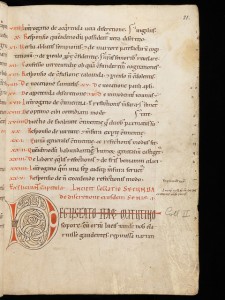Single Quire Codex
What is a codex? A codex is essentially an ancient book, consisting of one or more quires of sheets of papyrus or parchment folded together to form a group of leaves, or pages. This form of the book was not widely used in the ancient world until around the second century AD, when it slowly but steadily began to replace the traditional book form, the papyrus roll. Click the link below for more info!
http://www.lib.umich.edu/reading/Paul/codex.html
What is a quire? A quire is typically defined as four sheets of paper or parchment folded to form eight leaves, as in medieval manuscripts, any collection of leaves one within another in a manuscript or book, or more specifically 25 (formerly 24) sheets of paper; one twentieth of a ream. That being said, it varies. In the early days you could have 2 or 20; later on 4 becomes the standard.
Read more about the components of a codex and more here!
http://www.encasedinsteel.co.uk/2012/03/23/folia-quires-codices-and-manuscripts-what-are-they/
Background of the Codex: A codex (Latin for block of wood, book; plural codices) is a book in the format used for modern books, with separate pages normally bound together and given a cover. Although the modern book is technically a codex, the term is used only for manuscripts. The codex was a Roman invention that replaced the scroll, ...continue reading "Single Quire Codex"
